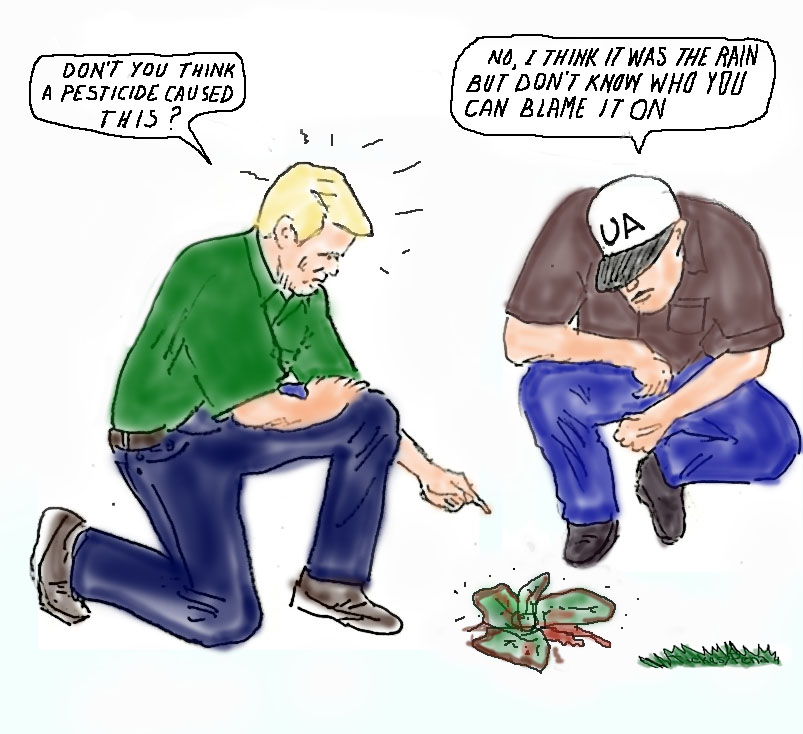
|
|
|
|

|
|||
|
|
|||
|
|
|||
|
Glyphosate and Gramoxone are commonly used at this time of year for ground preparation
for vegetable crops. These are both broad spectrum, non selective herbicides that
can cause injury to many crops and off target movement to fields where crops have
already been established is a concern. Both of these herbicides can move on air
and cause off-target injury but they are unlikely to cause problems after they have
reached the soil. Many herbicides can move after they have been deposited on the
soil but this is unlikely with these .They both adhere strongly to clay and silt
soils and are inactivated by the soil. It is not uncommon for Paraquat and Glyphosate
to be inactivated when dirty and high PH water is used and ammonium sulfate or a
water conditioner should be used prior to adding the herbicide when this type of
water is used. The injury symptoms that result when off target movement does occur
prior to soil deposition are very different for both of these. Paraquat is a fast
acting contact herbicide that causes necrosis to any part of the plant that it contacts
within 12 hours. Glyphosate is a much slower acting systemic herbicide that causes
chlorosis and discoloration over a period of 2 days to weeks.
Click picture to listen to Barry
To contact Barry Tickes go btickes@ag.arizona.edu. |
|||
| Back | |||
|
For questions or comments on any of the topics please contact Marco Pena at the Yuma Agricultural Center.
|
|||
|
Home |
Cotton | Veggies |
Forages | Grains
| Citrus |
Crop x Crop Insects | Diseases| Weeds | Pesticides | Economics | News | Weather | Research | Photos | Contacts | General Info. Copyright © 2001 University of Arizona, College of Agriculture and Life Sciences Webmaster: Al Fournier (acis@ag.arizona.edu) |
|||

